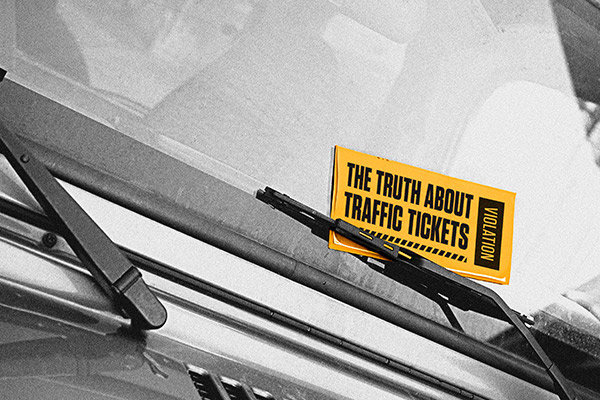The holiday season is a wonderful time to hit the road for a visit with family and friends. But it often means long drives in heavy traffic. To help you stay safe (and sane) on the road to your destination, here’s a list of defensive driving tips to prepare you for the drive.
Planning: The First Line of Defense
According to the National Safety Council (NSC), defensive driving means taking reasonable action to prevent a collision. But defensive driving starts before you even get on the road. Checking weather and road conditions in advance helps you plan a route and know what to expect along the way. It’s also important to pack the car with basic supplies. A first aid kit, flares, snacks and blankets ensure you’re ready for emergencies on long drives.
Traffic Watch
The holiday season is not only one of the busiest travel times, but this year’s low gas prices mean many people will probably choose to drive. And more cars on the road means a higher chance of fatal crashes, so it’s extra important to stay alert this year and learn to spot and avoid hazards using these NSC-approved tips.
– Defensive driving instructors recommend checking your mirrors every three to five seconds and continuously scanning ahead for possible dangers.
– Always give the right of way to fellow motorists, but be prepared to react to unexpected lane changes and turns.
– During heavy traffic, keep a safe distance from other vehicles and give yourself ample response time by slowing your speed.
– Look for signs of impaired, distracted and even aggressive driving and develop techniques like deep breathing to keep calm under pressure.
Collision-Proof Your Drive
 The NSC has identified six unsafe driving behaviors that most often lead to collisions. By understanding each infraction and learning how to avoid them, holiday travelers can develop safer driving habits and collision avoidance techniques.
The NSC has identified six unsafe driving behaviors that most often lead to collisions. By understanding each infraction and learning how to avoid them, holiday travelers can develop safer driving habits and collision avoidance techniques.
1) Improper speed. Keep a close eye on both the posted speed limit and weather conditions. Even if you’re obeying the limit, you may need to slow down to drive safely on a wet or icy road.
2) Violating right of way. To make sure you’re yielding properly and following all traffic signals and stop signs, drive at an appropriate speed to give yourself time to react and take a moment to scan intersections before entering them.
3) Driving left of center. Patience and foresight are key to avoiding this unsafe behavior. Slow down and stay behind cyclists or pedestrians until it’s safe to pass them, and watch the road ahead for animals or other obstacles so you can brake or safely steer around them instead of swerving into the other lane.
4) Turning improperly. Always use turn signals to let other drivers, pedestrians and cyclists know where you’re going. (Most traffic laws require you to signal within 100 feet of a turn, but you should check local regulations.)
5) Passing improperly. When passing, be sure to use your turn signals and check your blind spots, as well as in front of and behind your vehicle. You should be able to pass without getting too close to the car ahead or going over the speed limit; if you can’t, it may not be safe to pass.
6) Following too closely. At low speeds, this can lead to irritating fender benders; at high speeds, it can be deadly. Give yourself at least three seconds of distance between your own vehicle and the one ahead. If someone is tailgating you, don’t speed up! Maintain your speed and move over to let him or her pass if and when it is safe to do so.
Did you know? GEICO policyholders who complete defensive driver training could qualify for discounts on their auto insurance, depending on the state they live in. To learn more about defensive driver courses in your state, visit geico.com/ddc.
By Katherine Palbom & Kristen Koch










Carolyn says,
You can TRY to leave 3 seconds between you and the car in front of you – someone always squeezes in when trying to do this. As my husband would say – “you should have left sooner.”
betruong says,
I want to pay my bill
Betty Richards says,
Thanks for the tips.
Roberto Ramos Nunez says,
Thank you for the information.
Nimo M Hersi says,
the advise of avoiding risk driving cars of our human errors, you gave me or gave us some rules to prevent our life and everybody be save collisions in between two cars or three cars or more then, so prevention and anticipate is number one. Thank you I must avoid all articles you mention above plus god’s willing. specially when we have bad time or difficult weather.
Larry Boyd says,
Thanks. Winter tips are really helpful now. Some tips on anti-lock brake characteristics would be helpful for winter driving.
Eileen Bennett says,
Thank you for the information on Defensive Driving in Heavy Traffic. I think every driver should have this information especially at this time of the year.
I would like the Winter Driving Survival Guide
shirley church says,
Thank You for the driving tips, II wish all of us drivers would be ”considerate of each other and drive defensivly. and SLOW DOWN!
Randy Hargrove says,
All information is good information if it is applied and used to the BEST of ones ability. Drive safely but know and plan for those out there who definitely could care less especially during this time of year! ” To be aware is to be ALIVE”!! Amen!! Be safe out there… God Bless!! Merry Christmas and a Happy New Year to ALL!!
Brad holder says,
Thank you
Vikash says,
Thank you for bringing awareness among the people especially during Holidays. Great job.
Linda Young says,
I read it and liked it.
james jude says,
the more you know the safe you go
Howard Podell says,
Thanks for the information.
Blanche M Hardy says,
Thank you for the helpful hints. Living where I do in FL. we have a lot of snow birds and people that should no longer be driving. I have the habit of city driving which is all eyes on the road. Keeping a distance and watching my mirrors. It has helped me many times in keeping safe.